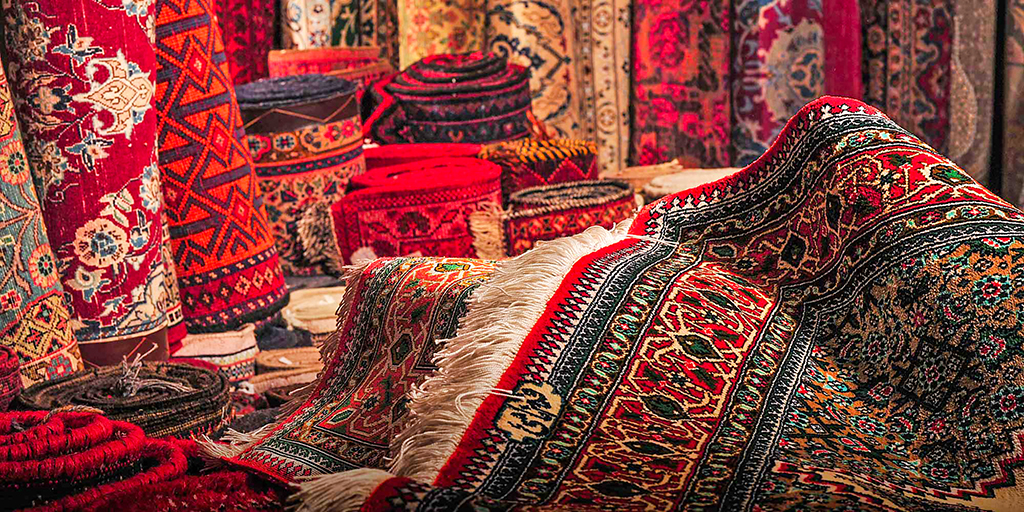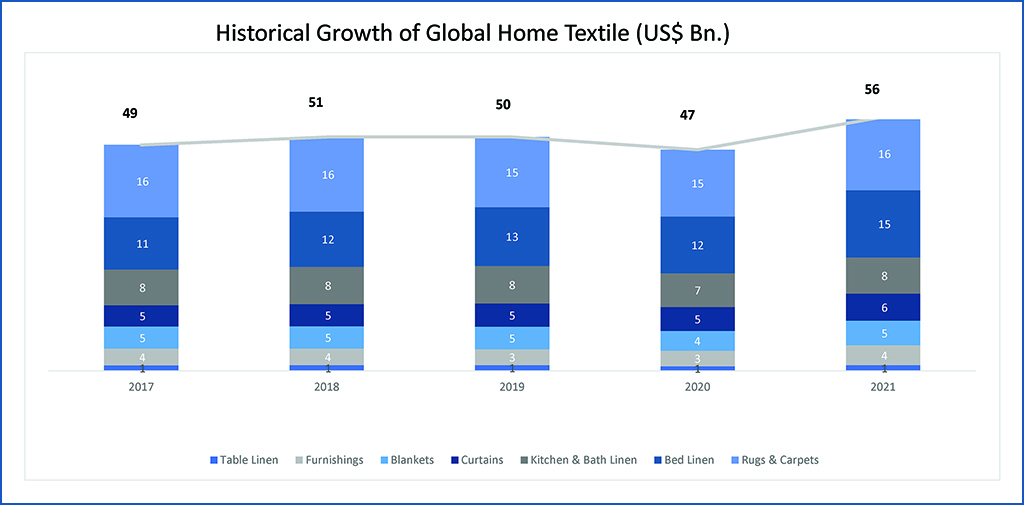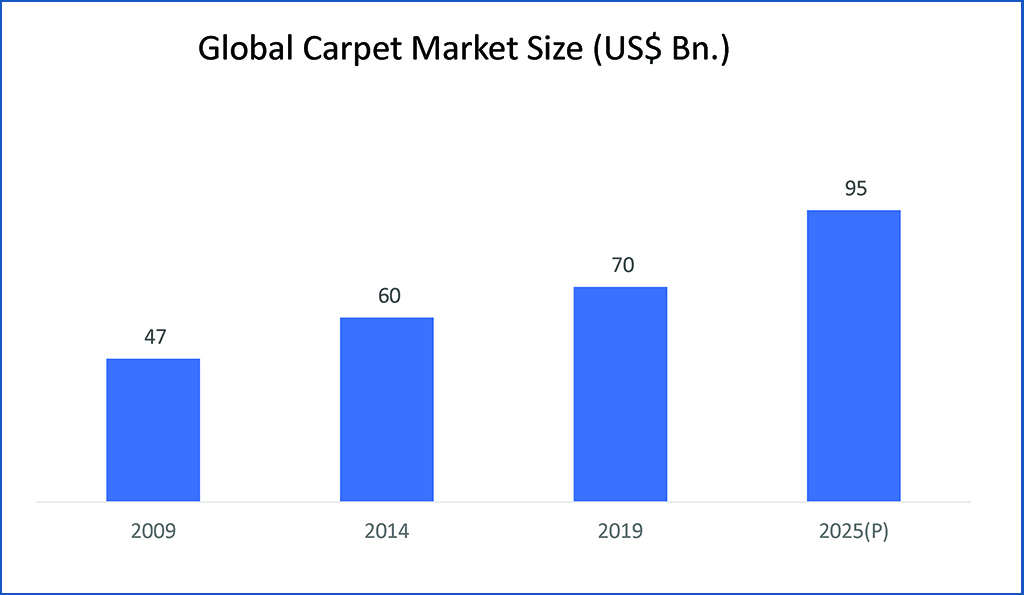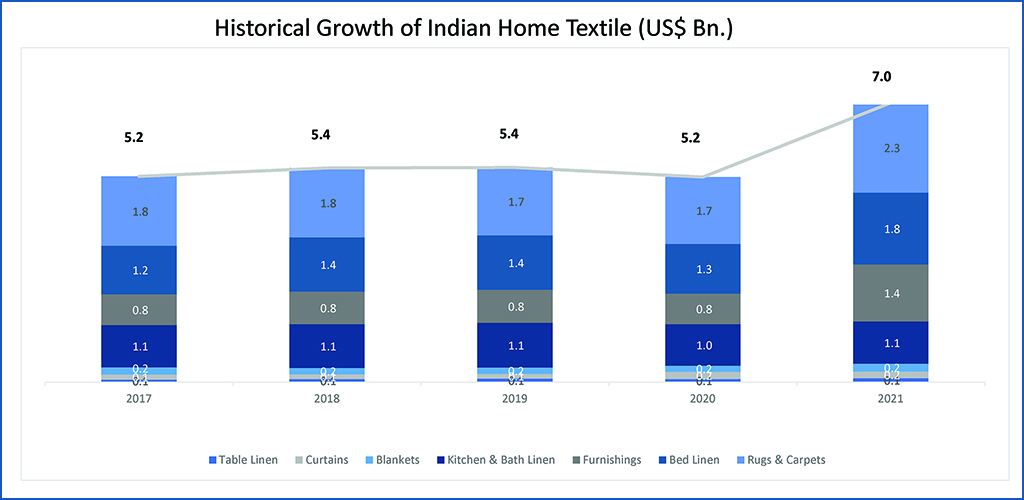Sonal & Aditya, Wazir Advisors

Home textile is one of the most profitable business segments in the global textile industry and accounts for 6% of the total Textile and Apparel (T&A) industry. The segment is witnessing a steady growth driven by factors like rise in consumer spending on home renovation, rapid urbanization, increasing purchase power in developing countries, and aesthetic sensitivity toward household furnishing. In 2021, the global trade was US$ 56 Billion of home textile commodities, which was 17% higher in comparison to 2020.
The United States and Europe are the biggest consumers constituting approx. 68% of the home textiles imports, with countries like China, India, Turkey, and Pakistan being the key suppliers.
The rugs and carpets sector was the largest traded category with a share of 30%, followed by bed linen and kitchen & bath linen respectively.

The global rugs and carpet market was worth US$ 70 billion in 2019 growing at a CAGR of 4% over the past 10 years. the market is further estimated to grow at a CAGR of 5% and reach US$ 95 billion by 2025. The rising need for comfort and privacy and growth in end-user segments – hospitality, corporate, retail, entertainment, aviation, etc., has spurred the demand for this category across the home textiles market. The consumer preference for aesthetically improved designs, textures, colours, low-maintenance and easy-to-install carpets are anticipated to ascend the market growth.
The USA is the largest market for rugs and carpets, accounting for 29% of the market share followed by Europe (18%) and Turkey (12%).

Global carpet production has reached 4.2 billion square meters. The USA is the largest producer of rugs and carpets in the world, occupying 30% of the share, followed by Europe (18%) and Turkey (12%). Almost 80% of US carpet market demand is met by domestic manufacturing and 20% of the same is met by imports. According to Carpet & Rug Institute (CRI), Georgia state supplies more than 45% of the world’s carpets. In fact, the top four carpets-producing nations are also the top four markets in the world.
Man-made carpet is the largest demanded segment in the global rugs and carpets market with a share of 46%, followed directly by woolen carpets (11%).
The Indian exports of home textiles have grown from US$ 5 billion in 2017 to US$ 7 billion in 2021 at a CAGR of 7.9% and is expected to grow with a double-digit CAGR from 2021 to 2030. The Indian government has introduced the Production Linked Incentive (PLI) Scheme in India to boost investment in the manmade textile, apparel, and technical textile manufacturing sectors. It is estimated that PLI will further attract investment in the Rugs and Carpets segment of approx. US$ 200 Mn. by 2025 in India.

Rugs and carpets exports of India stood at US$ 2.3 billion in 2021, growing at a CAGR of 6.6% since 2017. Among all types of rugs and carpets, tufted and wovens are the largest exported commodity while wool-based carpets are the most sought-after product. In order to boost India’s exports, Indian companies need to invest more in this sector’s manufacturing processes. Owing to the availability of raw materials and infrastructure, Indian firms have the potential to increase their market share in the global rugs and carpets segment.
Wazir Advisors, your trusted business advisor in the Textile and Apparel sector can assist you in strategy formulation and implementation, forming alliances and joint ventures, investments, market understanding, sector analysis, and due diligence, thereby providing end-to-end solutions spanning the complete business cycle in the textile value chain. Wazir can also help you in understanding and strategizing your business to align well with the global Textile and Apparel market.